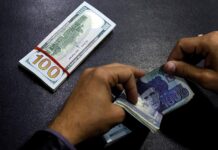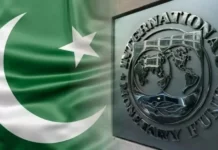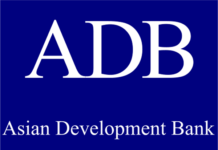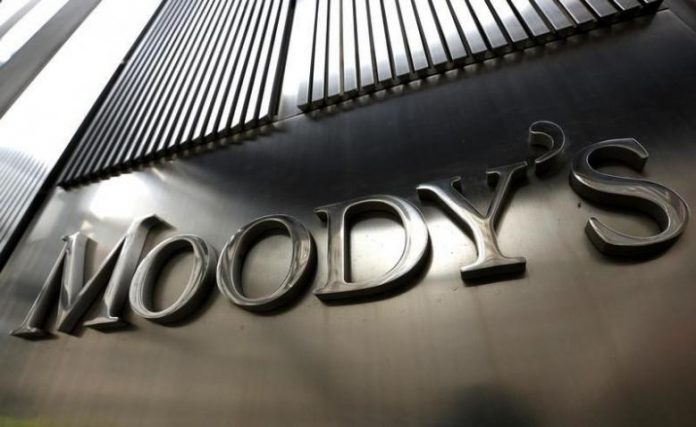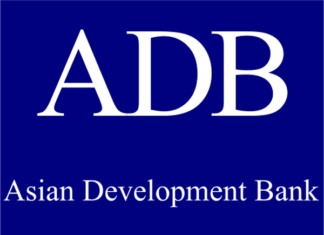LAHORE: International rating agency Moody’s Investors Service (Moody’s) has maintained that Trump administration’s revision of US military aid is highly unlikely to have material effect on Pakistan’s public finances, however, resumption of military aid would ease the pressure on the government deficit.
In January the Trump administration announced that all security assistance aid to Pakistan would be suspended but subsequently submitted a proposal to the US Congress to approve civil and military aid around prior year funding levels.
According to a credit opinion released on Wednesday, Moody’s said “While we continue to think that a reduction in US military aid in itself would not have a material effect on Pakistan’s public finances, the resumption of military aid flows would on margin ease the pressure on the government deficit, which we expect will amount to 5.5 per cent of GDP in FY2018.”
It went on to say, Pakistan’s addition to the grey list is highly unlikely to have any material impact on its external financing. “Pakistan was previously on this list between 2012 and 2015 but managed to negotiate and enter into an IMF programme during that time. Any adverse effects are more likely to materialize in the form of higher risk premia and borrowing costs, as well as more onerous compliance requirements,” it said.
While maintaining Pakistan’s outlook at B3, stimulated by robust growth potential and a relatively large economy against low-income levels, infrastructure constraints and very low global competitiveness, Moody’s said economic benefits of the China-Pakistan Economic Corridor (CPEC) are still “highly uncertain” and infrastructure impediments may continue to constrain growth to a greater extent than it currently envisages.
B3 is the foreign currency government bond rating assigned by the credit rating agency. International investors that buy sovereign bonds use Moody’s assessment to make investment decisions. Credit ratings assess how likely a borrower is to be able to repay its debts and help those trading debt contracts in the secondary market.
The credit rating agency determines Pakistan’s credit profile based on four factors; economic strength, institutional strength, fiscal strength and susceptibility to event risk. In its most recent update Moody’s maintained moderate (+), very low (+), very low (-) and high for each of the factors respectively.
Moody’s report read “In recent years, the credit has been supported by an improved track record of reforms started under an International Monetary Fund (IMF) programme, and improvements in power supply and infrastructure driven by the China-Pakistan Economic Corridor (CPEC) project. However, the government’s high debt burden, very narrow revenue base, fragile external payments position and high political risk constrain the credit profile.”
“Moreover, the fiscal costs related to the project and, more generally, development spending could raise Pakistan’s debt burden more rapidly and significantly than we expect,” it said.
In addition, the country’s external payments position has deteriorated owing to high levels of imports and could develop into greater external vulnerability, it added. “Political risk remains high in Pakistan due to uncertainty arising from recent political developments and recurrent terrorist attacks,” it noted.
The report further added that security threats, low per capita income, weak public project implementation and execution accompanied with climate change risks, mainly affecting the agriculture sector and rural household consumption, make Pakistan extremely vulnerable to absorb negative shocks.
On the upside, however, Moody’s noted that there is potential for further strengthening in growth beyond its current expectations, as the successful implementation of the CPEC has the potential to transform the economy by removing infrastructure bottlenecks and stimulating both foreign and domestic investment while boosting growth potential and competitiveness.
Factors that can lead to a downgrade in Pakistan’s rating include a stalling of the government’s post-International Monetary Fund (IMF) programme reform agenda, including revenue reforms and the strengthening of monetary policy and central bank independence. Continued material widening of the fiscal deficit, ongoing weakening of the external payments position, loss of multilateral/bilateral financial support, or significant escalation in political tensions can also weigh on Pakistan’s credit profile going forward, it said.
However, upward triggers to the rating will stem from sustained progress in structural reforms that would significantly reduce infrastructure impediments and supply-side bottlenecks. “This would improve Pakistan’s investment environment and eventually aid a shift to a sustained higher growth trajectory. A lasting strengthening in the external liquidity position or meaningful reduction in the government deficit and debt burden would also be credit positive,” it added.
The report noted that “Pakistan’s limited tax base restricts its fiscal space, while low savings and shallow capital markets hinder stable domestic financing of sizable budget deficits. The material foreign currency portion of outstanding government debt, approximately 30.6 per cent of total general government debt as of the end of FY2017, also exposes the government’s balance sheet to foreign exchange risks.”
Rupee Devaluation
In July 2017, Moody’s said the rupee was 20 per cent overvalued and had urged the State Bank of Pakistan (SBP) to show some flexibility and let the rupee depreciate.
An IMF report released earlier this month also stressed on the need for “greater exchange rate flexibility on a more permanent basis” to preserve external buffers and international competitiveness.
In its second round of depreciation, the rupee slid Rs7.40 against the US dollar after opening at Rs114.00 and went as high as Rs118.00 in the inter-bank market compared to its closing rate of Rs110.60 on Monday, before settling at 115.00 after revaluation rate by State Bank of Pakistan (SBP) here on Tuesday.
In December 2017, the rupee slumped to Rs109.50 per dollar at one point after opening at 105.55, bringing the cumulative depreciation at around 10 per cent financial year to date.
Earlier, in January Moody’s predicted that the rupee will likely face ongoing depreciation pressures against the US dollar after a 5 per cent downward adjustment in December.
Meanwhile, recent rounds of rupee devaluation would greatly alleviate foreign investor’s interest and potentially lead to Foreign Portfolio Investment (FPI) inflow as it was earlier reported that foreign investors were looking for another +5 per cent move in the rupee before re-entering the market. However, it is likely to fuel inflation and increase overall debt burden.
It is mention worthy that Moody’s and Standard & Poors have maintained Pakistan’s rating as B3 and long and short-term rating at B, respectively. Meanwhile, Fitch in January 2018 downgraded Pakistan’s outlook from stable to negative and reaffirmed the ‘B’ credit rating, citing political uncertainty and upcoming elections later in the year.


